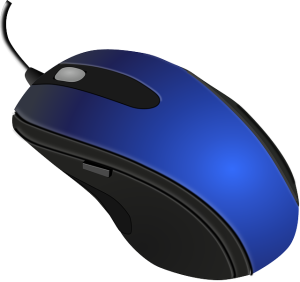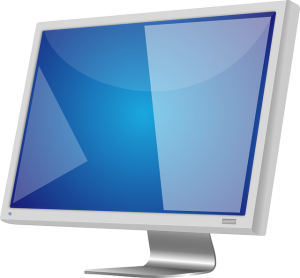
Hardware Icons Collection: Enhance Your Designs with Visual Appeal
In the world of design, visuals speak volumes. Whether you’re a graphic designer, web developer, or app creator, the significance of icons cannot be overstated. A hardware icons collection offers a treasure trove of visual elements that can elevate your projects from ordinary to extraordinary. Let’s dive into the realm of hardware icons and explore how they can revolutionize your design process.
Table of Contents
| Sr# | Headings |
|---|---|
| 1. | Understanding Hardware Icons |
| 2. | Importance of Visual Communication |
| 3. | Versatility Across Platforms |
| 4. | Accessible Design for All Users |
| 5. | Enhancing User Experience |
| 6. | Symbolism and Recognition |
| 7. | Incorporating Icons into Design Projects |
| 8. | Trends in Hardware Icon Design |
| 9. | Benefits of Using Hardware Icon Collections |
| 10. | Finding the Right Hardware Icons Collection |
| 11. | Tips for Effective Icon Implementation |
| 12. | Future of Hardware Icons |
| 13. | Conclusion |
| 14. | FAQs: Frequently Asked Questions |
1. Understanding Hardware Icons
Hardware icons are graphical representations of various electronic devices, components, and interfaces. They encompass icons for computers, peripherals, mobile devices, and more. These icons serve as visual cues, aiding users in quickly identifying functions, actions, or devices within interfaces.
2. Importance of Visual Communication
In a digital landscape saturated with information, visual communication is paramount. Hardware icons streamline user interactions by reducing cognitive load and enhancing comprehension. They bridge language barriers and cater to a diverse audience, making interfaces more intuitive and user-friendly.

3. Versatility Across Platforms
Hardware icons transcend platforms and mediums, seamlessly integrating into websites, applications, presentations, and print materials. Their scalability ensures crisp rendering across various screen sizes and resolutions, maintaining clarity and visual appeal across devices.
4. Accessible Design for All Users
Accessible design principles underscore the importance of inclusivity in interface design. Hardware icons play a crucial role in creating accessible experiences for users with disabilities. Clear, recognizable icons enhance navigation for individuals with visual impairments or cognitive disabilities, fostering an inclusive digital environment.
5. Enhancing User Experience
The user experience hinges on efficient navigation and clear communication. Hardware icons contribute to a cohesive user experience by guiding users through interfaces with precision and clarity. Intuitively designed icons streamline workflows, reducing friction and enhancing overall satisfaction.
6. Symbolism and Recognition
Icons carry symbolic meaning and cultural significance, transcending language barriers and evoking universal recognition. Familiar icons such as the power symbol or Wi-Fi symbol convey complex concepts with simplicity, facilitating instant comprehension and enhancing user engagement.
7. Incorporating Icons into Design Projects
Integrating hardware icons into design projects requires thoughtful consideration of aesthetics, functionality, and brand identity. Icons should align with the visual language of the project while maintaining consistency and clarity. Customization options allow designers to tailor icons to specific themes and styles, ensuring seamless integration within diverse design contexts.
8. Trends in Hardware Icon Design
Hardware icon design evolves in tandem with technological advancements and design trends. Minimalism, flat design, and skeuomorphism influence contemporary iconography, emphasizing simplicity, clarity, and visual hierarchy. Adaptive iconography addresses the demands of responsive design, optimizing icons for multi-platform compatibility and fluid user experiences.
9. Benefits of Using Hardware Icon Collections
Hardware icon collections offer a myriad of benefits for designers and developers alike. Ready-made icon sets accelerate design workflows, saving time and resources while maintaining design consistency. Comprehensive collections provide a diverse range of icons, catering to diverse project requirements and design preferences.
10. Finding the Right Hardware Icons Collection
Selecting the right hardware icons collection entails assessing factors such as icon style, quality, licensing, and customization options. Established repositories and marketplaces offer curated collections of premium icons, providing designers with access to high-quality resources and supporting sustainable design practices.
11. Tips for Effective Icon Implementation
Effective icon implementation hinges on strategic placement, appropriate sizing, and contextual relevance. Icons should complement textual content, serving as visual aids rather than distractions. Consistent iconography fosters familiarity and reinforces brand identity, enhancing overall user experience and visual cohesion.
12. Future of Hardware Icons

As technology continues to evolve, hardware icons will adapt to meet the demands of emerging platforms and devices. Dynamic icons, animated transitions, and interactive elements redefine traditional iconography, enriching user interfaces with immersive experiences and enhanced functionality. The future of hardware icons lies in innovation, accessibility, and seamless integration across digital ecosystems.
13. Conclusion
In conclusion, hardware icons collection serves as indispensable tools for designers and developers seeking to enhance visual communication and user experience. From simplifying navigation to fostering inclusivity, icons play a pivotal role in shaping digital interactions and elevating design aesthetics. Embrace the power of hardware icons to unlock boundless creative possibilities and captivate your audience with compelling visual narratives.
14. FAQs: Frequently Asked Questions
Q1. What are hardware icons?
Hardware icons are graphical representations of electronic devices, components, and interfaces used in digital interfaces and design projects.
A1. Hardware icons facilitate intuitive navigation and enhance visual communication, streamlining user interactions and improving user experience.
Q2. How can I find the right hardware icons collection for my project?
A2. Look for reputable repositories and marketplaces offering diverse collections of high-quality icons. Consider factors such as style, licensing, and customization options to find the perfect fit for your design needs.
Q3. What are some trends in hardware icon design?
A3. Contemporary trends in hardware icon design include minimalism, flat design, and adaptive iconography, emphasizing simplicity, clarity, and responsiveness across various platforms.
Q4. Why are hardware icons important in design?
A4. Hardware icons enhance visual communication, streamline navigation, and contribute to a cohesive user experience by providing clear, recognizable visual cues within interfaces.
Q5. How can hardware icons improve accessibility?
A5. Clear, recognizable icons enhance accessibility by facilitating navigation for users with disabilities, including those with visual impairments or cognitive disabilities, fostering an inclusive digital environment.
Unlock the potential of hardware icons to transform your designs and captivate your audience with visually stunning interfaces. Embrace innovation, creativity, and inclusivity to craft immersive digital experiences that resonate with users across diverse platforms and devices.